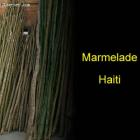ADVERTISEMENT
City
Who Ownes Navassa Island? - La Navase in Haiti
Navassa, an uninhabited island in the Caribbean Sea, is part of mainland Haiti. Between two- and three-square miles, it sits approximately 100 miles from Guantanamo Detention Center.
Founded in 1504 by sailors, its status during the next 300 years is mostly unclear. But between its founding and U.S. acquisition of the island, marine forces occupied it until it was turned over to the U.S. in the 1850s. For four decades, the U.S. mined the island for the phosphate, guano. Foreign and domestic conflicts brought mining to a halt by the end of the century.
The completion of the Panama Canal in the early 1900s raised Navassa's profile again when a lighthouse was constructed on the island. But in 1996, Navassa became abandoned when its lighthouse operations ceased.
Cap-Haitien Architecture
The former Capital of the colony of Saint-Domingue, Cap-Haitian was called Cap-Francais and consequently, has kept the beautiful French architecture of the time.
Cap-Haitien is the highlights of Haitian History besides the cultural values of its architecture. Its well preserved French colonial architecture was so beautiful and modern during the French colonization that it was surname "The Paris of the west"
Christophe rebuilt the re-named Cap Haitian, which became his capital, to some of its former glory. His most impressive achievements were his castle, the Palais Sans Souci, which is said to have rivaled Versailles in its day, and the behemoth Citadelle.
Cap-Haitian During the Colonization Period
The city of Cap-Haitian has a reach history, specially during the French colonization. This small city has its name changed at least four times. It as founded in 1670 by Bertrand d'Ogeron who saw the great opportunity at the time based on its geographic location. However, as the region started growing as an economic force for France, the city called at this time Cap-Francais became a major port to ship sugar, coffee, cotton and indigo. The merchants began to display their wealth and Cap-Francais acquired the name'Paris of the Antilles.'
The great wealth the city well know to be generating at the time was produced on the back of the African slaves who had replaced the indigenous peoples who had migrated from present-day Central and South America in the 16th century. Due to the colonization and introduction of new infectious diseases, as well as poor treatment received by the colonizers, the indigenous population rapidly declined.
Jacmel Carnival is part of the Identity of the City
The city of Jacmel has many things going for it. Beside the beautiful beaches with spectacular view and. Beside its historic, 19th century colonial houses which were inhabited by wealthy coffee merchants, Jacmel is also popular for its carnival
For a city considered today to be the cultural capital of Haiti, one very important annual event is Jacmel Carnival. I is usually held one week before the National Carnival in Haiti. During this time, Haitians of all background, rich, poor, black, white and mulatos all merge in the city with only one objective, to experience the best Haitian Carnival of the year.
Jacmel, a city of former wealthy coffee merchants
The City of Jacmel was originally founded 1698 and became a major coffee trading centre during the colonization period with some of its residents, wealthy coffee merchants, considered at the time to be some of the most influential people in the Colony.
One important event that will change the shape of this influential city of Jacmel was the fire of 1896. This fire reduced the entire city to almost nothing, with only a few buildings left standing. The city of Jacmel was rebuilt but this time with a structure that will prove itself over time. Many of the homes since the fire of 1896 were made with prefabricated cast-iron pillars and balconies which would withstand fire. These materials were designed and built in France and shipped to Haiti.
Caracol and the Industrial Park
Caracol is a village located in Haiti in the Nord-Est Deparment. In the Trou-du-Nord Arrondissement it is a municipality. It is located at a slight elevation and has around 6236 inhabitants within coordinates 19°41′0″N and 72°1′0″W. In Haiti it is a destination, least visited by travelers.
Caracol was a fishing village surrendered by mountainous. It borders with the Dominican Republic for around 360 km. Caracol enjoys a semiarid and tropical climate. Trade winds are easily cut off by the mountains in the region. French is the official language spoken by people in Caracol.
Pignon In Haiti, Nord Department
This is a city you will find in the Nord region of Haiti, in the Saint-Raphael Arrondissement. Around 29,327 people inhabit it.
Pignon is naturally well protected town against possible tornadoes and tropical storms that are frequent in the area. It is situated in a valley that is safeguarded by gigantic mountains.
Jean Guillaume de Pignon, a French tradesmen and a plantation owner founded this beautiful town of Pignon in 1699. He settled his family in the village at the foot of the mountains, shortly after the Treaty of Ryswick was signed with Spain.
Beautiful La Victoire Town In Haiti
La Victoire is located in Haiti's Nord Department at an altitude of 1417 above the level of the sea. In the Saint-Raphael Arrondissement, it is a municipality. It is inhabited by around 6421 people.
Getting To This Beautiful Destination
This is a mountainous region in Haiti. The town is beautifully surrounded by hills and steep valleys. Small rivers and streams flow at the bottom of these valleys. Port-au-Prince, Haiti's capital was destroyed in the 2010 earthquake and people in significant numbers fled to La Victoire town taking a toll on its scarce resources.
Petit-Goave After The 2010 Earthquake
Life goes on for residents of Petit-Goave, a town in the Department of Ouest, after the earthquake that rattled Haiti in 2010. Though they have yet to fully recover from the devastating disaster, the residents have been trying to get by with the help of relief aid organizations.
In January 2010, the 7-magnitude tremor shook the town, killing many people and destroying most of the buildings and structures. Petit-Goave was one of the most damaged towns during the calamity. Marines from the United States have been sent to Petit-Goave in order to provide relief.
Pointe-a-Raquette, Road Condition, Climate, Religion
A small town in Haiti's Arrondissement of La Gonave, Pointe-a-Raquette is home to more than 22,800 people. Gros Mangle, Grand Vide, La Source and Trou Louis are the sections composing the municipality.
Because it is only a small town, Pointe-a-Raquette needs more development when it comes to road construction and transportation. The town's infrastructure remains underdeveloped, with more dirt roads than smooth ones. Some are paved but only with loose gravel. Going to and from the town might be difficult for some travelers because there is no airport in the area. One must have to travel 80 kilometers just to reach the closest airports, which are the Camp Canargus Airport and the Barbers Point Airport. However, only local passengers can use those airports. Those flying overseas will need to go to the international airport in Port-au-Prince, which is 85 kilometers from Pointe-a-Raquette.
Our objective is to share with you news and information about Haiti and the people of Haiti. Traditions, habits and the way we were or grew are alive in this site. We highly recommend that you Subscribe to our Newsletter and also share with us some of the things that are memorable and made us unique people.

 Haitian Creole Translation
Haitian Creole Translation  Marmelade, Haiti
Marmelade, Haiti  Black Friday Shopping Season
Black Friday Shopping Season  Haiti tech Summit
Haiti tech Summit  Haitians are a Proud People
Haitians are a Proud People